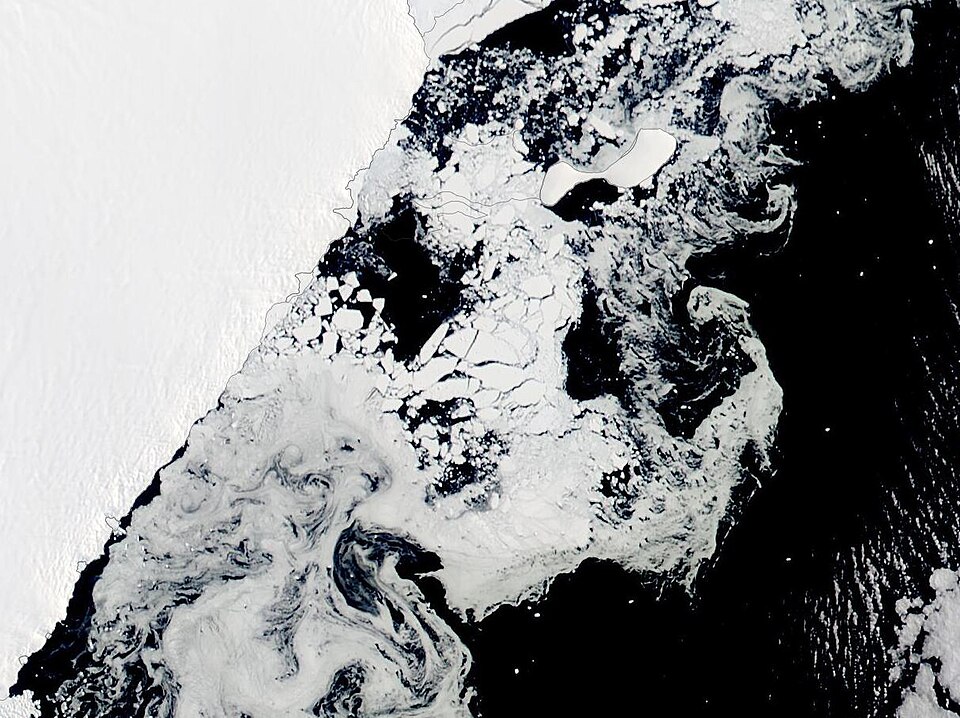Ancient River Landscapes Beneath Antarctica May Stabilize Ice Sheet

In a groundbreaking study published in the *Nature Geoscience* journal on July 27, 2025, researchers have revealed that ancient river landscapes buried beneath the Antarctic ice sheet could significantly influence the rate of ice loss in this critical region. Utilizing advanced radio echo sounding—a radar-based technique for measuring ice thickness—scientists investigated the East Antarctic Ice Sheet, focusing on the areas between Princess Elizabeth Land and George V Land.
The findings indicate that this ice sheet, particularly vulnerable to climate change, is underpinned by vast, previously undocumented flat surfaces that are remnants of ancient river systems. The research team, led by Guy Paxman, a Royal Society university research fellow from the Geography Department at Durham University, discovered a 2,100-mile stretch of these flat landscapes which had remained uncharted until now. These surfaces, thought to have formed after the East Antarctic separated from the supercontinent Gondwana approximately 80 million years ago, may play a critical role in stabilizing parts of the ice sheet while allowing rapid melting in surrounding troughs.
According to Paxman, “The flat surfaces we have found have managed to survive relatively intact for over 30 million years, indicating that parts of the ice sheet have preserved rather than eroded the landscape.” This preservation is significant as it suggests that the ice sheet may act as a protective layer over these ancient geological features, potentially mitigating the effects of climate change. The research team posits that the smoother surfaces were shaped by river erosion, in contrast to the rougher areas sculpted by the ice itself.
The implications of this study extend beyond mere geological curiosity; they carry significant weight in understanding future projections of ice change and sea-level rise in a warming world. The potential for ancient landscapes to stabilize ice sheets presents a complex interaction between geological history and contemporary climate dynamics. Dr. Sarah Johnson, an expert in glaciology at the University of Cambridge, emphasized the importance of understanding these interactions: “As we accelerate into a warmer future, the feedback mechanisms between ancient landscapes and ice dynamics will be crucial in predicting sea-level rise.”
In addition to Dr. Johnson, other experts in the field have commented on the importance of this research. Dr. Michael Anderson, a climate scientist at the National Oceanic and Atmospheric Administration (NOAA), noted that “this study highlights the need for a deeper understanding of how ancient and contemporary landscapes interact with climate change. The traditional models of ice loss may need to be reevaluated in light of these findings.”
The study also aligns with previous research that indicates the East Antarctic Ice Sheet has been undergoing changes due to warming ocean waters, which can penetrate the ice through subglacial troughs. According to a report by the United Nations Intergovernmental Panel on Climate Change (IPCC) published in 2022, the melting of Antarctic ice contributes significantly to global sea-level rise. As such, understanding the geological features beneath the ice is paramount in making accurate predictions about future climate scenarios.
As the global community grapples with the reality of climate change, research like this underscores the intricate connections between geological history and contemporary environmental challenges. The survival of these ancient river landscapes could be a key factor in the stability of the Antarctic ice sheet, making further study essential. The researchers advocate for continued exploration of the East Antarctic Ice Sheet, stating that “a comprehensive understanding of these ancient landscapes is vital as we move forward in addressing the impacts of climate change.”
In conclusion, as the threat of climate change looms larger, studies that unveil the hidden geological features of our planet offer critical insights that can help inform climate models and policy decisions aimed at mitigating the impacts of sea-level rise. The interplay between ancient river systems and ice stability presents a fascinating area for ongoing research that could shape our understanding of climate resilience in the future.
Advertisement
Tags
Advertisement





